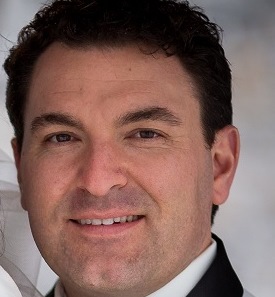Creative Ways to Learn Math Using Sports
Is your child spending more time on the soccer field than in the classroom this summer? That can be a good thing. Summer sports provide compelling real-world opportunities for kids to apply and grow their math skills. Whether keeping score for a game or calculating batting averages, math is key to sports. It goes both ways: sports can also help with math—and other subjects, too. In addition, many studies indicate a link between physical activity and academic achievement.

However your child stays active, there’s sure to be math involved. Here are some creative ways to learn math through sports.
Heads or Tails?
Many competitions begin with a coin toss. Heads or tails? Which to choose? Probability tells us that for a single coin toss, there are two possible outcomes – heads or tails – so the chance of getting either one is 1 in 2, or 50%. Try this math experiment: flip a coin each day until school is back in session and record the results. Chances are you won’t get heads exactly 50% of the time, but it should be pretty close.
Diamonds are a Girl’s Best Friend
Softball and baseball are both popular sports. They are played on a field called a diamond. Review basic geometric shapes with your child and then work together to figure out which shape is most widely used for sports.
1, 2, 3 Strikes You’re Out!
Softball and baseball also involve a lot of counting. Each time a new batter comes to the plate and a pitch is thrown but the ball is not hit, the umpire calls it as a strike or ball (or in some cases, a foul). Three strikes equal one out and three outs means it’s the other team’s turn to bat. Keeping track of those basic numbers can occupy a younger child, but older, more serious players will want to understand more complicated calculations, like batting averages.
Batting average is determined by dividing a player’s total number of hits during the season by the number of times he or she was at bat over that same time period. A superstar would have a 1.0 average, meaning a hit at every opportunity.
Your little slugger needn’t get discouraged if his or her average is far from perfect, though. Even Mike Trout, one of the Major League Baseball’s top 2017 players has an average of only .337, meaning three or four hits for every 10 times at bat! Your child may not be keen on doing division, but when it helps him or her track his or her performance and how he or she measures up to the pros, he or she might be more motivated to do the work. At the very least, updating your player’s batting average after each game demonstrates the value of math.
Swimming
Nothing will tune your kids into time like knowing that as little as one hundredth (.01) of a second could mean the difference between winning a race and losing it. Your child might be surprised to learn that a lot of the important math in competitive swimming comes down to angles. Grab your protractor, a pen and a sheet of paper to help your child envision what it means to do a 180-degree rotation on a flip turn or to push off of a wall. For strokes like freestyle (crawl) or the butterfly, arms should be at 90-degree angles. Help your child understand what a 90-degree angle looks like. How many 90-degree angles can they find around the house? Probably lots!
Swimming math can get much more complicated. In fact, engineers design pools and swimsuits just to optimize the performance of swimmers.
Mathlete or Athlete?
Maybe your child is more mathlete rather than athlete. No worries, fantasy sports leagues are perfect for armchair athletes. While fantasy players might not be working their muscles, their brains will get quite a workout as they compare and contrast statistics on a wide range of players in order to form a winning team. There are many options available, but if you prefer something just for kids, keep an eye out for the new fantasy football season to start at NFL Rush.
Whether your child is at sports camp or carefully charting the progress of favorite athletes, his or her “math brain” can get a great work out this summer!

Featured Blogger
Mark Kance

Mark B. Kance, M.A.T. is the Executive Director at the Hamilton Township Sylvan Learning in Hamilton New Jersey. Sylvan Learning is the leading provider of tutoring to students of all ages, grades and skill levels with more than 30 years of experience and nearly 800 centers located throughout North America. Sylvan's trained and Sylvan-certified instructors provide personalized instruction in reading, writing, mathematics, study skills and test-prep for college entrance and state exams. Sylvan also hosts MomMinded.com, a blog offering tips and resources from moms and education experts. For more information, call 1-800-31-SUCCESS or visit www.SylvanLearning.com.




























